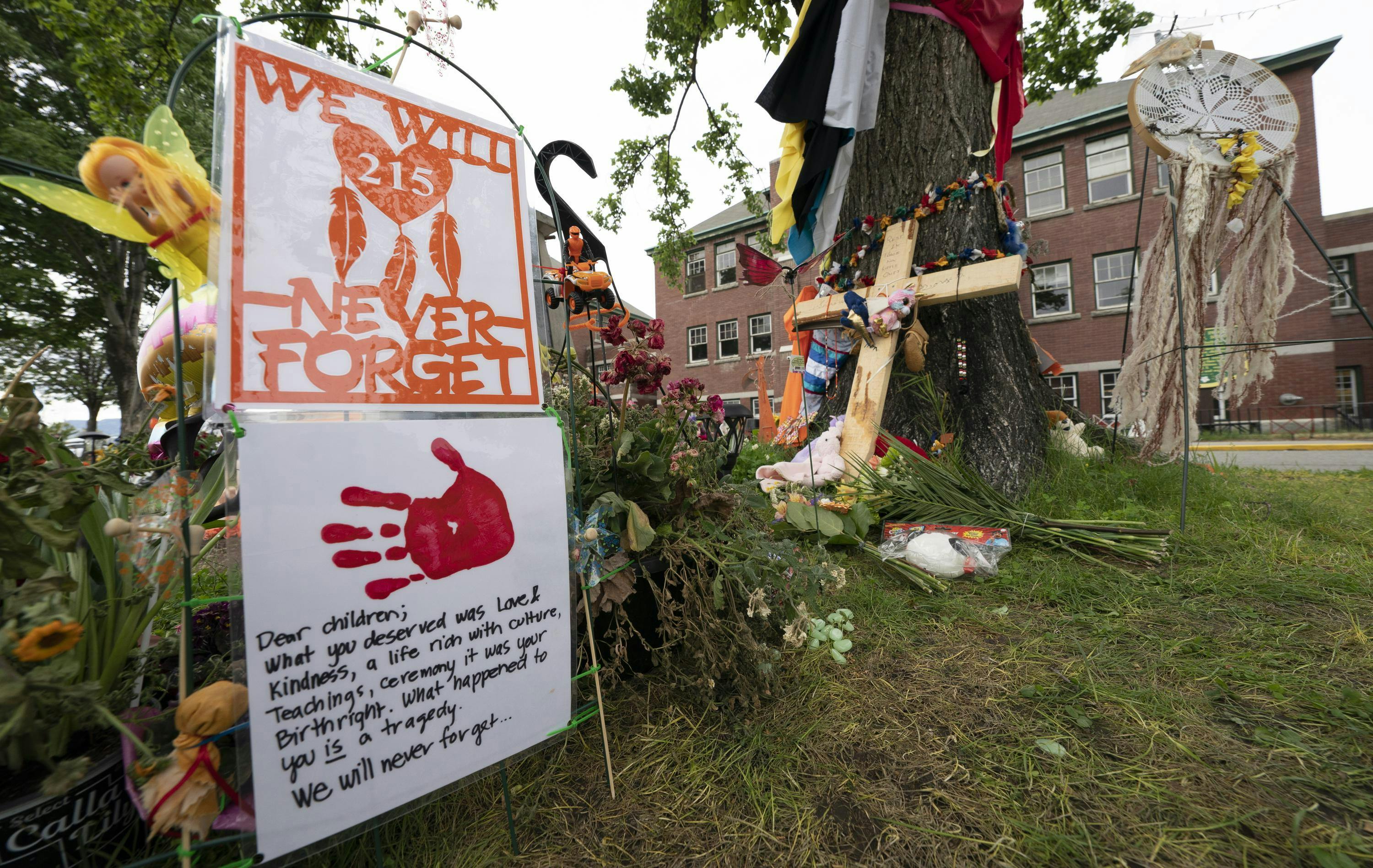Mass graves and burning churches in Canada

The bodies of more than 1,110 Indigenous children have been found in unmarked burial sites on the grounds of old residential schools in Canada. In late May, the Tk’emlúps te Secwépemc Nation announced that ground penetrating radar had discovered the first mass graves near Kamloops, British Columbia. More bodies have since been discovered by the Cowessess First Nation in Saskatchewan province, and at St. Eugene’s Mission School at the Ktunaxa Nation in British Columbia. More sites are likely to be discovered: just three out of hundreds of old schools have been investigated.
The residential school system operated from the 1870s to 1996. It was part of a broader federal policy to assimilate First Nations people into the dominant Canadian culture, mirroring Australia’s system of missions and reserves. The schools were established by the federal and provincial governments, but most were run by the Catholic and Anglican churches.
In 2015, the final report of the Truth and Reconciliation Commission (established in 2008 after successful litigation by residential school survivors) concluded that the system was a program of cultural genocide. Students were beaten if they spoke their native language, and schools were overcrowded with poor sanitation and heating. Tuberculosis was rife. In one school, the death rate reached 69 percent, according to a report by Department of Indian Affairs Chief Medical Officer Peter Bryce. Many students also suffered sexual abuse at the hands of teachers and administrators.
It has long been suspected that the graves existed. Oral histories of residential school survivors recorded stories of children as young as six being woken in the night to dig graves. A juvenile rib bone and tooth were also found near the Kamloops school twenty years ago. The Missing Children project—an initiative of the Truth and Reconciliation Commission—has documented more than 4,100 deaths in residential schools, almost certainly an underestimation.
Reactions to the recent revelations have ranged from pitiful to inspiring. Canadian Prime Minister Justin Trudeau tried to shift the blame from the federal government to church authorities, requesting the pope visit Canada to offer an official apology—something the Vatican has refused to do. The federal government was also quick to deflect anger by establishing a national day of truth and reconciliation.
For many people, symbolism was not enough. Activists at Ryerson University in Toronto were already campaigning to change the name of the university and to remove a statue of Egerton Ryerson—one of the architects of the residential school system. On 6 June, a protest of thousands finally tore down the statue. In Saskatoon, Saskatchewan, protesters covered the Catholic cathedral in red handprints and wrote “We were children” on the door. Five churches in British Columbia have been burned to the ground.
On Canada Day, the national holiday on 1 July, protest actions were organised across the country. In Winnipeg, Manitoba, demonstrators toppled statues of Queen Victoria and Queen Elizabeth II. Ten churches in Calgary, Alberta, were again marked with red handprints. Elsewhere in the province, another church was burned down.
The protests galvanised public support for Indigenous struggles in a way that greater knowledge of colonial crimes, on its own, has not. Recent polling by Abacus Data shows that at least 50 percent of respondents in all age groups are angry about the treatment of Indigenous people in residential schools and a majority agree that the school system was an act of genocide.
Another poll, by Innovative Research, found a dramatic increase in the number of people paying attention to Indigenous issues and struggle. Seventy-five percent said that they had read or heard about Indigenous issues. In the previous five times (between 2007 and 2015) that this survey was conducted, only once was the proportion above 50 percent. Similarly, there has been an increase in the number of people agreeing that Indigenous Canadians deserve compensation for colonialism. A similar shift in public opinion did not occur following the Truth and Reconciliation Commission or the release of other, similar, reports.
Arguably the shift in opinions is the cumulative result of recent Indigenous protest movements. These include the struggles of the Wet’suwet’en in British Columbia against a gas pipeline, the occupation at 1492 Landback Lane in Ontario, where the Six Nations attempted to stop a housing development on their land, ongoing battles over fishing rights in Nova Scotia, where the Mi’kmaq are defending treaty rights against white fishermen, and a blockade in the Arctic Archipelago, where Inuit hunters, with the support of some of the mine workers, are attempting to stop the expansion of an iron ore mine.
Shifting attitudes alone won’t end the oppression of First Nations peoples, but they indicate the potential for broad solidarity movements. While protest actions have subsided since the initial discoveries of burial sites, more graves being discovered will likely result in more waves of protest.